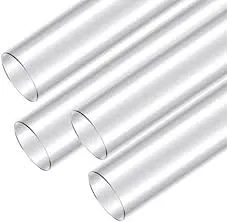Nov . 11, 2024 11:39 Back to list
waste pipe fittings
Understanding Waste Pipe Fittings A Comprehensive Guide
Waste pipe fittings are an essential component of plumbing systems, designed to manage the flow of wastewater from various fixtures in residential and commercial settings. These fittings play a crucial role in maintaining hygiene and sanitation by ensuring that wastewater is effectively carried away and does not pose a health risk. This article will explore the different types of waste pipe fittings, their applications, and key considerations when installing and maintaining them.
Types of Waste Pipe Fittings
Waste pipe fittings come in various shapes and sizes, each designed for specific applications. The most common types include
1. Elbow Fittings Used to change the direction of the waste pipe, elbow fittings are typically available in angles of 45° and 90°. These fittings help navigate around obstacles and make connections between pipes that require a directional change.
2. Tees Tees are utilized to connect three sections of pipe, allowing for branch lines to be added to the main waste line. This is essential in systems where multiple fixtures are draining into a single waste pipe.
3. Couplings Couplings connect two sections of pipe and are crucial for extending the length of the waste line. They ensure a secure connection between pipes, minimizing leaks and potential blockages.
4. Plugs These fittings are used to close off the end of a waste pipe, often utilized in testing new installations or temporarily closing sections during repairs.
5. Cleanouts A cleanout fitting allows for easy access to the waste line for cleaning and maintenance purposes. Regular access to these fittings is vital for preventing clogs and ensuring the system remains functional.
6. Adapters These fittings are designed to connect pipes of different sizes or materials. For instance, an adapter may be used to connect a PVC pipe to a cast iron pipe, ensuring a smooth transition and preventing leaks.
Applications of Waste Pipe Fittings
Waste pipe fittings are used in a variety of plumbing applications, including
waste pipe fittings

- Residential Plumbing In homes, waste pipe fittings connect fixtures such as sinks, toilets, and bathtubs to the main drainage system. Proper installation and maintenance of these fittings are critical for preventing sewage backups and maintaining good health standards.
- Commercial Plumbing Businesses often require more complex plumbing systems due to the larger number of fixtures and potential waste volume. Waste pipe fittings play a vital role in ensuring that wastewater is efficiently managed in restaurants, hotels, and industrial facilities.
- Sewage Systems In municipal sewage systems, waste pipe fittings are crucial for connecting different pipes and managing the flow of wastewater to treatment facilities. Durable materials and reliable fittings are essential in these applications to handle the pressures and corrosive nature of wastewater.
Key Considerations for Installation and Maintenance
When working with waste pipe fittings, several key considerations should be made
- Material Selection Waste pipe fittings are commonly made from materials like PVC, ABS, cast iron, and copper. The choice of material will depend on the specific application, chemical compatibility, and environmental conditions. PVC, for example, is lightweight, resistant to corrosion, and easy to install, making it a popular choice for residential plumbing.
- Proper Sizing Selecting the right size of fittings is crucial to ensure adequate flow and prevent blockages. Undersized fittings can lead to increased pressure and potential leaks, while oversized fittings can disrupt the flow and create inefficiencies.
- Installation Techniques Proper installation techniques should be followed to avoid issues such as misalignment and leaks. This includes ensuring tight connections, using the correct tools, and following manufacturer guidelines.
- Regular Maintenance Regular maintenance of waste pipe fittings is essential for preventing clogs and extending the life of the plumbing system. This can include routine inspections, cleaning out cleanouts, and checking for signs of wear and tear.
Conclusion
Waste pipe fittings are integral components of any plumbing system, ensuring the safe and efficient disposal of wastewater. Understanding the types of fittings, their applications, and maintenance requirements can help homeowners and professionals alike in ensuring a healthy and functional plumbing system. By making informed choices regarding material, size, and installation techniques, one can significantly enhance the longevity and performance of waste management systems.
-
Durable Glossy PVC Rigid Sheet | Premium High-Shine Panels
NewsAug.26,2025
-
Durable PP Rigid Sheet: Lightweight, Chemical Resistant Solutions
NewsAug.21,2025
-
PVC Grey Sheet for Extraction: Chemical Resistant & Durable
NewsAug.19,2025
-
Durable PVC Pipe Fittings for Plumbing & Irrigation Needs
NewsAug.18,2025
-
HDPE Steel Belt Reinforced Spiral Corrugated Pipe | High Strength
NewsAug.17,2025
-
HDPE Pipe Fittings: Durable, Leak-Proof Solutions
NewsAug.16,2025

